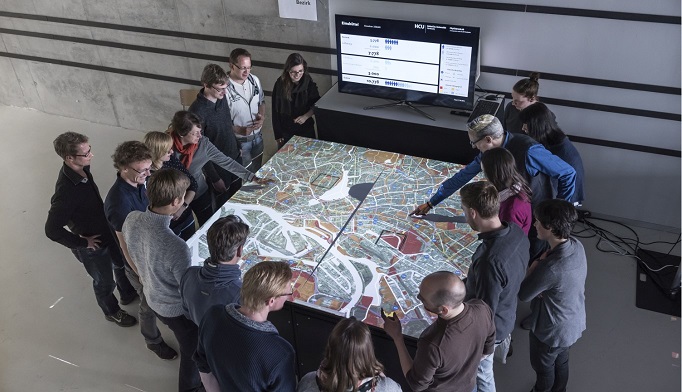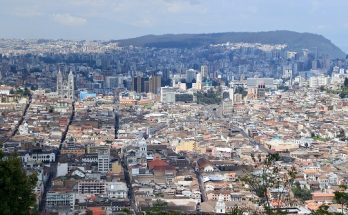Introduction
Public participation in urban areas is a cornerstone of democratic governance and sustainable development. It involves the active engagement of citizens in the decision-making processes that shape their cities, including planning, policy formulation, and implementation.

Effective public participation ensures that urban development is inclusive, transparent, and responsive to the needs and aspirations of the community. This essay explores the importance of public participation, the methods of engagement, the challenges faced, and strategies to enhance citizen involvement in urban areas.
The Importance of Public Participation
- Democratic Governance: Public participation is fundamental to democratic governance. It empowers citizens to influence decisions that affect their lives, ensuring that urban policies and plans reflect the diverse interests of the community. This inclusivity fosters a sense of ownership and accountability, strengthening the legitimacy of governmental actions.
- Improved Decision-Making: Engaging the public brings diverse perspectives, local knowledge, and innovative ideas to the table. This can lead to more informed and effective decision-making, as planners and policymakers gain insights that might not be apparent through top-down approaches alone.
- Social Equity: Public participation helps address social inequalities by giving marginalized and vulnerable groups a voice in the planning process. It ensures that their needs and concerns are considered, promoting equitable access to resources, services, and opportunities in urban areas.
- Community Cohesion: Active participation fosters a sense of community and solidarity. When citizens work together towards common goals, it builds trust, cooperation, and social capital. This can lead to more resilient and cohesive communities, capable of tackling urban challenges collectively.
Methods of Public Participation
- Public Meetings and Hearings: These are traditional methods where citizens gather to discuss urban issues, provide feedback, and express their opinions. They are often used during the planning stages of major projects or policy changes.
- Workshops and Focus Groups: Smaller, more interactive sessions that allow for in-depth discussion and problem-solving. These are useful for gathering detailed input and fostering collaborative decision-making.
- Surveys and Questionnaires: These tools can reach a broad audience and gather quantitative and qualitative data on public opinion and preferences. They are often used to complement other participation methods.
- Online Platforms: The digital age has introduced new avenues for public engagement, including social media, websites, and mobile apps. These platforms can facilitate real-time communication, wider reach, and more convenient participation.
- Participatory Planning and Budgeting: These approaches involve citizens directly in the planning and allocation of public resources. They can help prioritize projects and ensure that investments reflect community needs.
Challenges to Public Participation
- Limited Awareness and Engagement: Many citizens may be unaware of participation opportunities or may feel apathetic due to past experiences of being ignored. Raising awareness and demonstrating the impact of participation is crucial.
- Resource Constraints: Effective participation requires time, money, and skilled facilitators. Municipalities with limited resources may struggle to organize and sustain participation processes.
- Representation and Inclusivity: Ensuring that all segments of the population, including marginalized and minority groups, are represented can be challenging. Efforts must be made to reach out to diverse communities and address barriers to their participation.
- Complexity of Issues: Urban planning and policy issues can be complex and technical, making it difficult for laypersons to fully understand and engage. Simplifying information and providing education can help bridge this gap.
- Conflicting Interests: Diverse urban populations often have conflicting interests and priorities. Mediating these conflicts and finding consensus can be difficult but is essential for effective participation.
Strategies to Enhance Public Participation
- Education and Capacity Building: Providing citizens with the knowledge and skills needed to participate effectively is crucial. This can include workshops, informational materials, and ongoing support.
- Transparent and Inclusive Processes: Ensuring that participation processes are transparent and inclusive builds trust and encourages broader involvement. This includes clear communication about the goals, methods, and outcomes of participation efforts.
- Leveraging Technology: Utilizing digital tools and platforms can enhance accessibility and convenience, making it easier for more people to participate. Online surveys, virtual town halls, and social media campaigns can reach a wider audience.
- Collaborative Partnerships: Partnering with community organizations, NGOs, and other stakeholders can strengthen participation efforts. These partners can help mobilize communities, provide resources, and facilitate engagement.
- Feedback and Follow-Up: Providing feedback to participants about how their input was used and the outcomes of their involvement is essential. This shows that participation is valued and has a real impact, encouraging continued engagement.
Conclusion
Public participation in urban areas is essential for creating vibrant, inclusive, and sustainable cities. It empowers citizens, improves decision-making, and promotes social equity and community cohesion. Despite the challenges, effective strategies can enhance public participation, ensuring that urban development reflects the needs and aspirations of all residents. By fostering a culture of engagement and collaboration, cities can become more responsive, resilient, and democratic.



